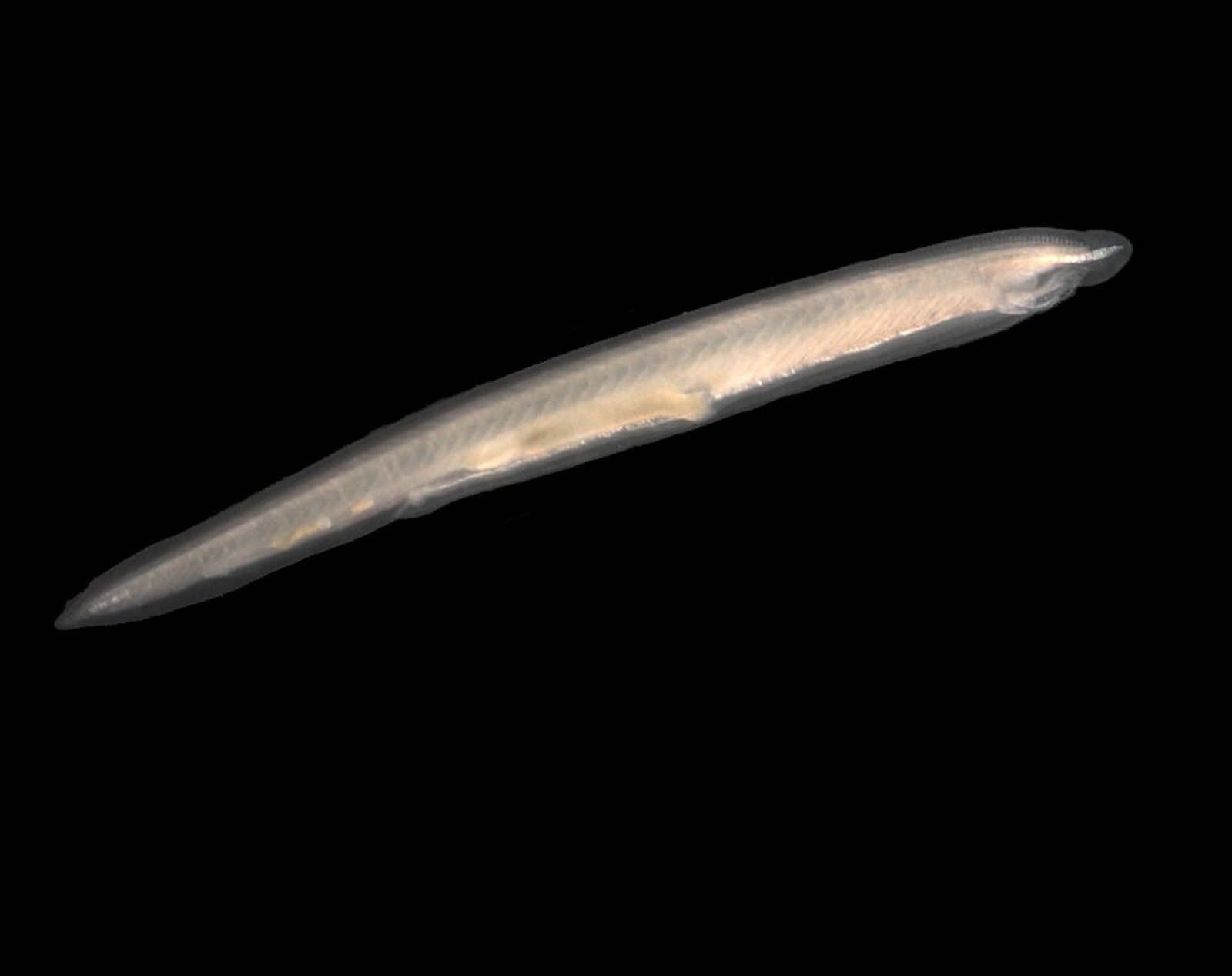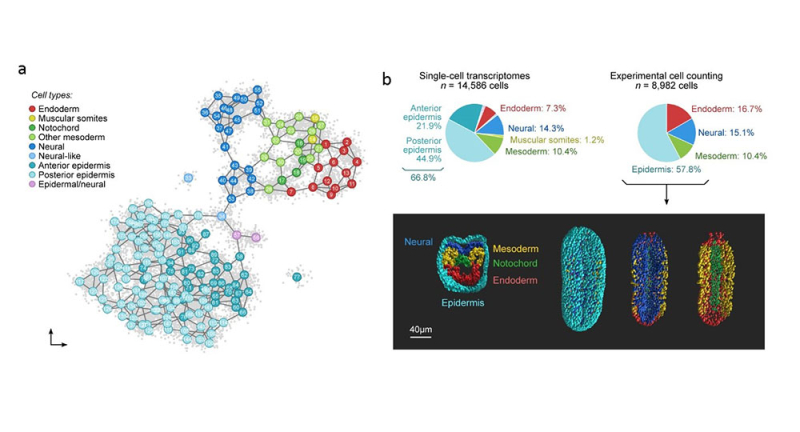Follow us on Google News (click on ☆)

In an article published in Nature Communications, scientists used the amphioxus, a close relative of vertebrates, to understand the mechanisms that led to this complexity.
The vertebrate head: a complex structure unique to vertebrates.
Vertebrates are characterized by extremely complex morphological structures compared to other invertebrate chordates. One of these structures, perhaps the most fascinating, is their head.
This head is composed of a series of organs and tissues that evolved in response to the adaptation from a passive to an active form of feeding. Among the tissues forming the head, the musculature has raised many questions. This musculature originates from the mesoderm, which, along with the ectoderm and endoderm, is one of the three embryonic layers that develop early in the process and generate all the tissues of the adult body.

A specimen of lancelet (or amphioxus) —Subphylum: Cephalochordata— collected from coarse sand sediment (600 µm) on the Belgian continental shelf. Total length: approximately 0.9 inches (22 mm).
Wikimedia image
In contrast to body muscles, which form from mesodermal segments called somites, the muscles of the head develop from unsegmented pharyngeal mesoderm and the prechordal plate.
Studying the amphioxus to understand how the vertebrate head was formed
This muscle development from an unsegmented territory is a specific characteristic of vertebrates, and in cephalochordates (i.e. amphioxus), invertebrates closely related to vertebrates, the paraxial mesoderm is segmented along the entire body, which is proposed as the ancestral condition.
The emergence of new morphological structures or new tissues can be linked to the evolution of new cell types resulting from the remodeling of genetic regulatory networks during embryonic development.
Thus, to formulate hypotheses about the emergence of these vertebrate-specific muscles, those of the head, scientists employed scRNA-seq technology (single-cell transcriptome sequencing) to build a cellular atlas of the amphioxus neurula, a developmental stage during which the main mesodermal compartments are specified.
The data obtained allowed them to propose a hypothesis regarding the evolutionary history of the vertebrate head muscles. It was shown that in the amphioxus, there is a territory similar to the vertebrate prechordal plate, and homologies were demonstrated between specific regions of amphioxus somites and the pharyngeal and lateral mesoderm of vertebrates.

Atlas of cell types in the amphioxus neurula.
A. Two-dimensional projection of cell clusters ("meta-cells"). Meta-cells are color-coded according to cell type.
B. Pie charts showing the fraction of cells assigned to each cell type among the transcriptomes obtained (top); and 3D reconstruction of the amphioxus neurula with the nuclei assigned to each embryonic layer (bottom). A cross-section is shown on the left, and dorsal views on the right with the anterior part at the top (complete view, excluding epidermal nuclei and excluding epidermal and nerve cell nuclei).
© Nature Communications / Hector Escriva
In this evolutionary scenario, recently published in Nature Communications, the emergence of mesodermal structures specific to the vertebrate head would have been associated both with the segregation of preexisting cell populations in their ancestor and the co-option of new genes to control the formation of "new" muscles.
References:
An amphioxus neurula stage cell atlas supports a complex scenario for the emergence of vertebrate head mesoderm
Grau-Bové X, Subirana L, Meister L, Soubigou A, Neto A, Elek A, Naranjo S, Fornas O, Gomez-Skarmeta JL, Tena JJ, Irimia M, Bertrand S, Sebé-Pedrós A, Escriva H.
Nature Communications. May 29, 2024; DOI: 10.1038/s41467-024-48774-4. PMID: 38811547; PMCID: PMC11136973.